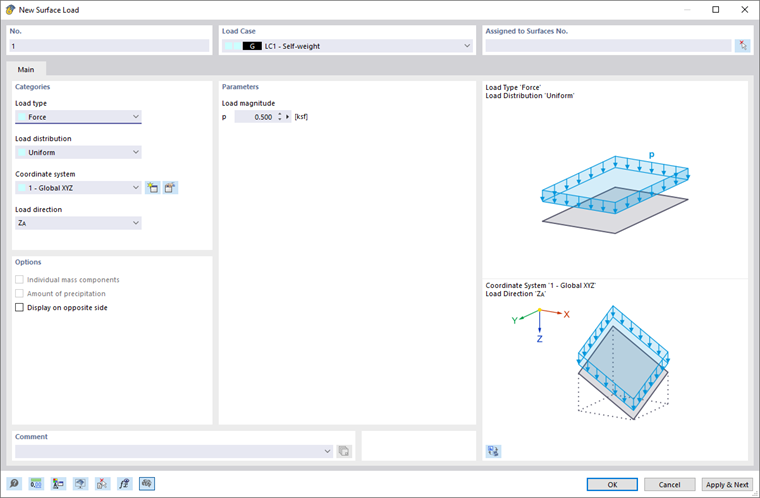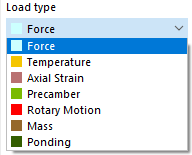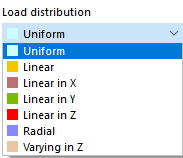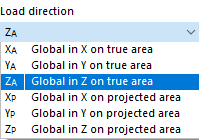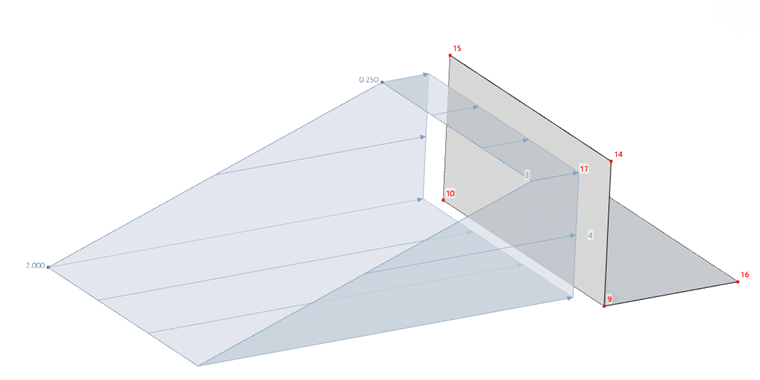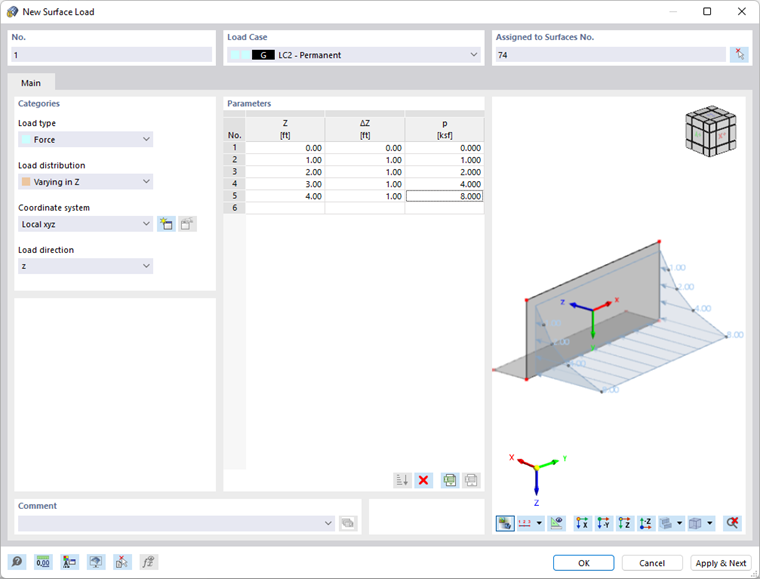Surface loads are forces, moments, masses, temperature effects, or imposed deformations that act on surfaces. Openings are omitted from the surface load.
In the list, select the "Load Case" to which you want to assign the load.
Categories
The following options are available in the "Load type" list:
| Load type | Description |
|---|---|
| Force | Uniformly distributed, linearly variable, or radially acting force on surface |
| Temperature | Temperature load that is radially arranged or uniformly distributed, linearly variable over thickness of surface (positive load value: surface or surface top side heats up) |
| Axial Strain | Imposed or compressive strain ε of surface (positive load value: surface is strained) |
| Precamber | Imposed curvature of surface |
| Rotary Motion | Centrifugal force from mass and angular velocity ω on surface |
| Mass | Mass continuously distributed over surface, which is relevant for Dynamic Analyses. |
| Ponding | Rain load applied on multi-curved surfaces (ponding water) considering runoffs (see Technical Article in Knowledge Base) |
| Form-Finding (only for the Form-Finding add-on) | Uniform force or geometric specification for form-finding load (see the chapter Form-Finding Loads of the Form-Finding manual) |
The load type and the effects of the signs are illustrated in the upper dialog graphic.
The "Load distribution" list provides various options for displaying the arrangement of the load.
The load distribution scheme is illustrated in the upper dialog graphic. In the "Parameters" dialog section, you can then specify the values, the reference nodes, and other parameters of the load.
In the "Coordinate system" list, define whether the load acts in the direction of the local xyz-surface axes or the global XYZ-axes. Alternatively, you can select a user-defined coordinate system or create a new one. The local z-axis is oriented perpendicular to the surface.
Select the "Load direction" from the list to define the effect of the load. Depending on the coordinate system, the local surface axes x, y, z, the global axes X, Y, Z, or the user-defined axes U, V, W are available for selection.
The surface load can be related to the true area (such as a weight load) or the projected area (such as a snow load). The load direction is illustrated in the dialog sketch.
Parameters
Specify the load value of the force, moment, or mass. For concentrated or variable loads, several input fields are available where you can describe the line load. The meaning of the respective parameters is illustrated in the load sketch.
For loads "Varying in Z", a table is available to describe the Z-ordinates by the corresponding load values.
Options
You can affect the display of the load vectors by the "Display on opposite side" option.
